March 2022 Edition
Updates Per Project
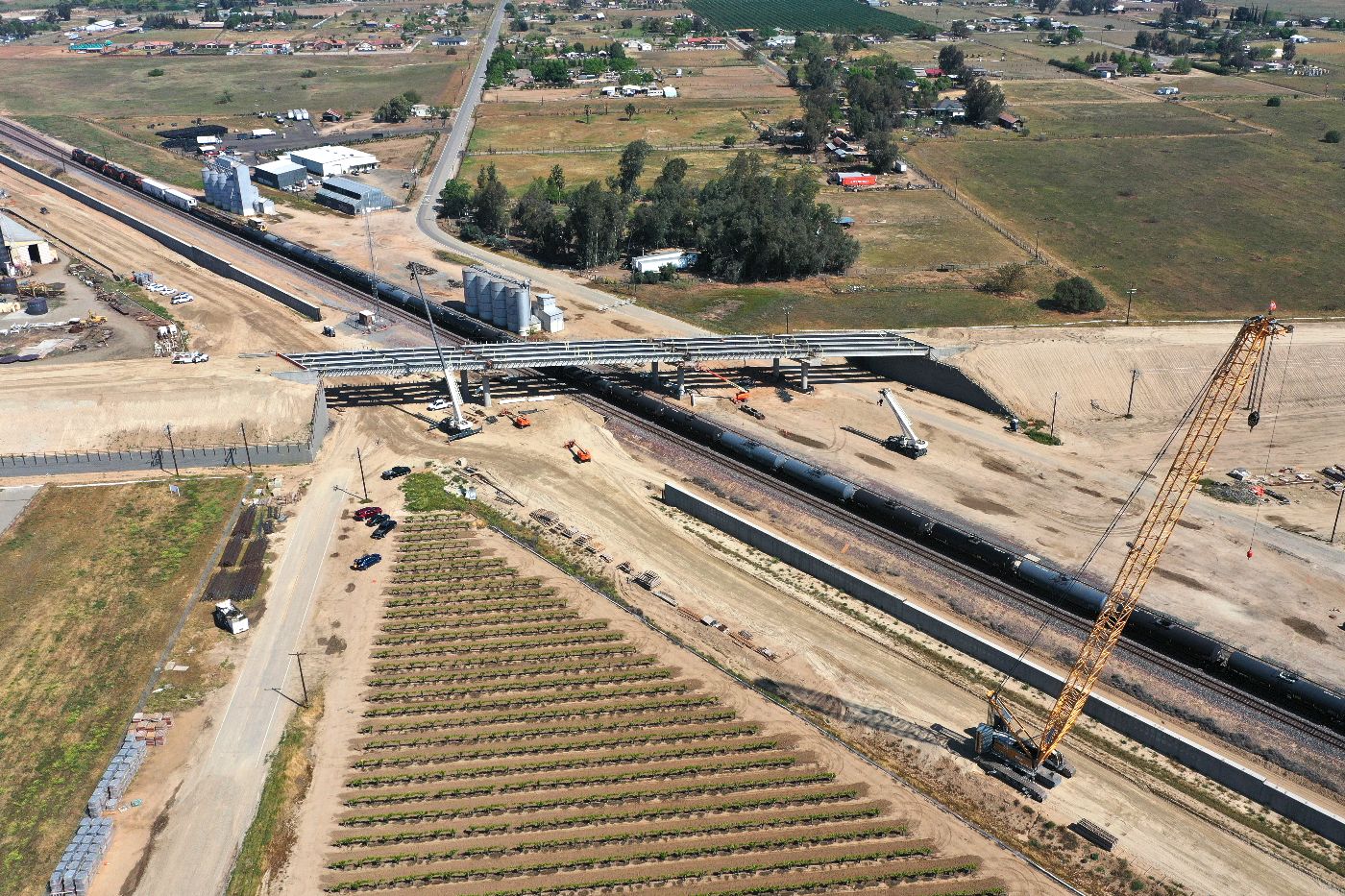
CP 1: Avenue 15 1/2 Grade Separation
At the Avenue 15 ½ Grade Separation, crews have completed construction of the substructure including columns and bent caps. Concrete has been placed at the east abutment and crews are now forming the west abutment. Girders will be set for the superstructure later this Spring. When complete, the Avenue 15 ½ Grade Separation will be 468-feet long, and 40-feet wide and will take trains over BNSF and future high-speed rail lines.
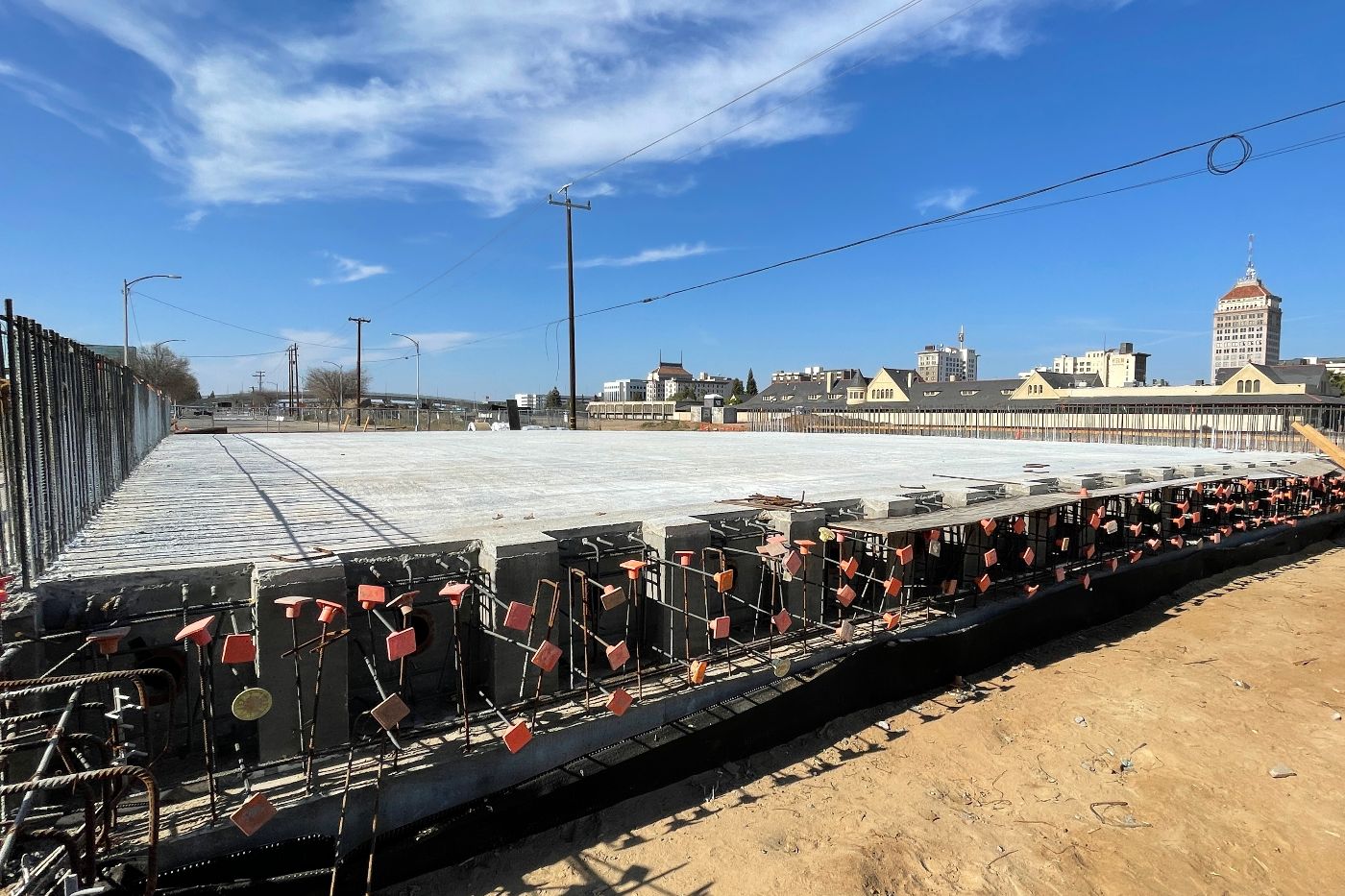
CP 1: Tulare Street Underpass
Between downtown and Fresno’s Chinatown, progress continues on the Tulare Street underpass. Both tracks of the Union Pacific railroad have been cutover to the shoofly, a temporary track built for the construction of the grade separation. Also, the west approach retaining walls and excavation under G Street is now complete. Crews have also installed the falsework for the G Street Bridge, placed concrete to form the bridge deck, and are now preparing to begin post-tensioning the ducts inside the bridge deck.
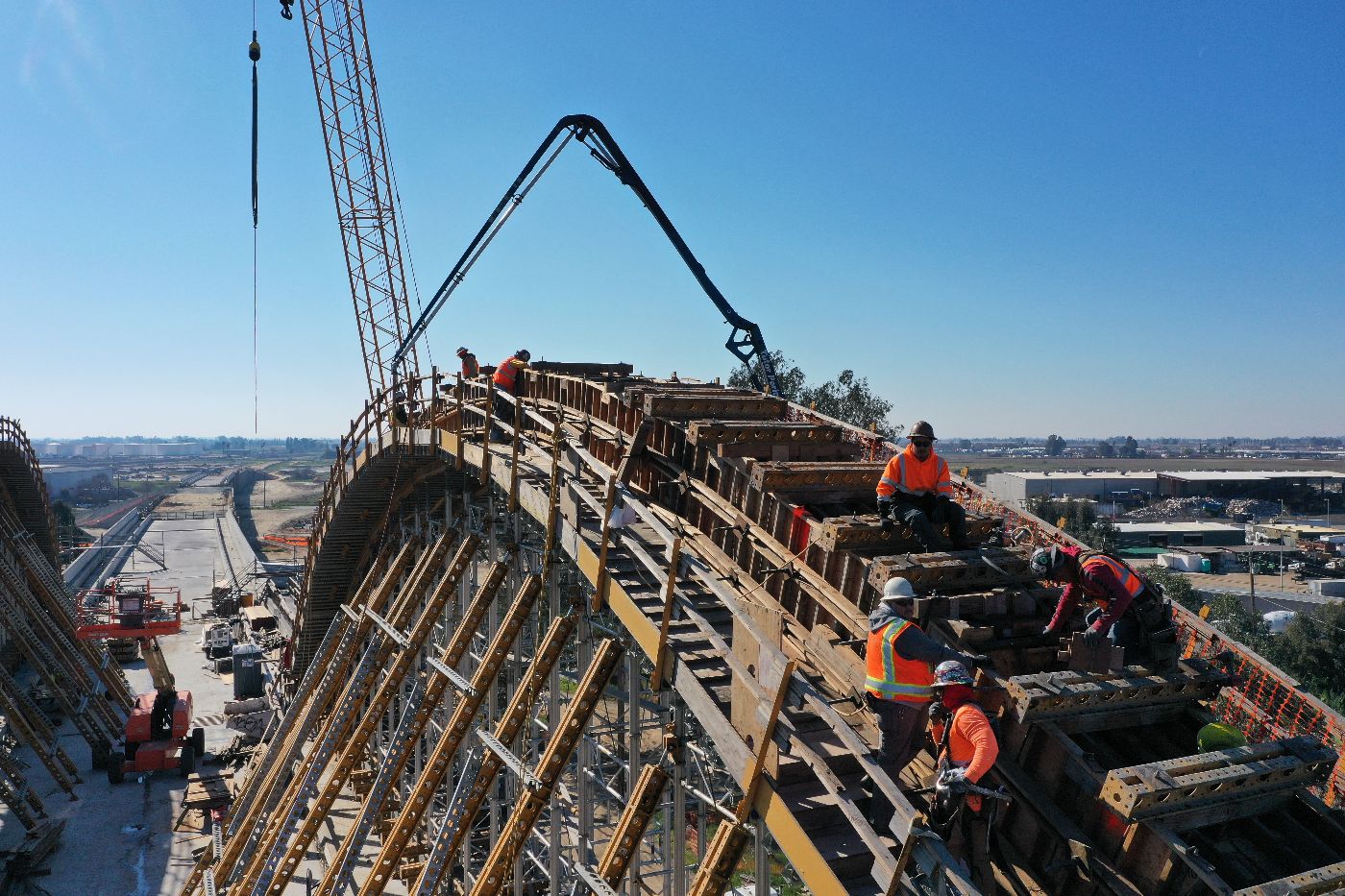
CP 1: Cedar Viaduct
The arches at the Cedar Viaduct continue to take shape. To date, crews have placed more than 225 cubic-yards of concrete to form three of the four arches that span over State Route 99. Concrete to form the fourth and final arch will be placed later this spring. To the south of the Cedar Viaduct, embankment continues to be hauled and mechanically-stabilized earth (MSE) walls continue to go up bringing the Cedar Viaduct and structure at Muscat Avenue together.

CP 2-3: Adams Avenue Grade Separation
At Adams Avenue in Fresno County, crews recently installed 16 concrete pre-cast girders to form the superstructure of the Adams Avenue Grade Separation. Now, crews are gearing up to set pre-cast concrete panels to form the deck of the structure while ironworkers tie rebar for the diaphragms, the supporting portion of a bridge that goes between each girder to help prevent girders from rotating and to help distribute vertical load distribution.
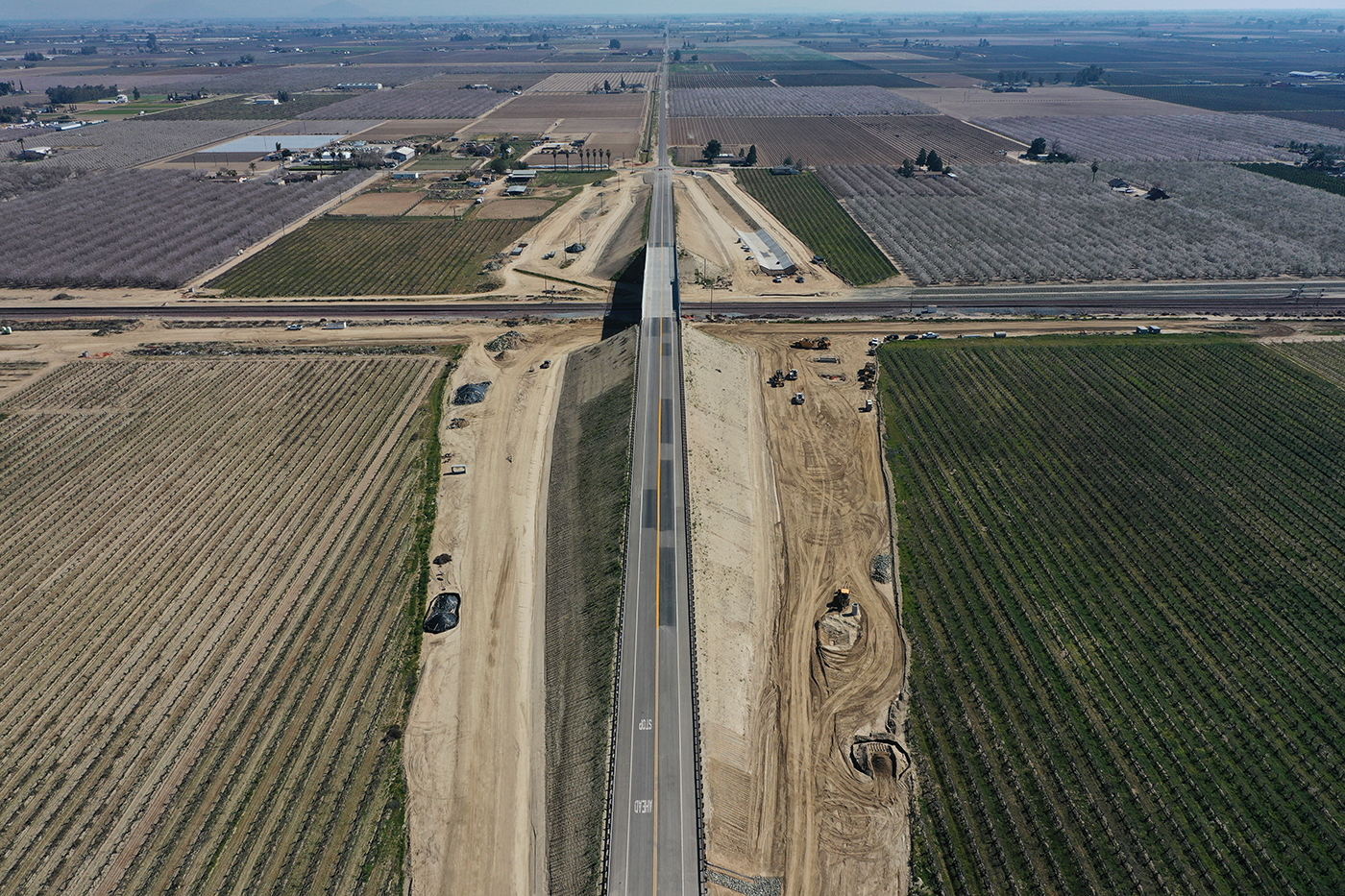
CP 2-3: South Avenue Grade Separation
South Avenue is open to traffic! Last month, the Authority in collaboration with design-build contractor Dragados-Flatiron Joint Venture (DFJV), announced the completion of the South Avenue Grade Separation. Located between Cedar and Maple Avenues, the newly constructed overpass allows traffic to travel over the existing BNSF Railway and future high-speed rail lines. It is one of 36 grade separations being built in Construction Package 2-3 to improve safety along the high-speed rail alignment. The South Avenue Grade Separation spans nearly 390 feet and is 40 feet wide.

CP 2-3: Conejo Viaduct
Crews are working late nights and on weekends to install 248 pre-cast concrete girders needed for the pergola section of the Conejo Viaduct. As of March 1, crews have installed 33 girders that span nearly 124-feet long and weigh more than 150,000 lbs. each.

CP 2-3: Dover Avenue Overcrossing
This Spring, 12 pre-cast concrete girders will be placed to form the superstructure of the Dover Avenue Overcrossing which will take traffic over the future high-speed rail lines. These girders will range from 62-feet to 91-feet long and weigh as much as 89,000 lbs. When complete, the overcrossing will be 227-feet long and more than 43-feet wide.
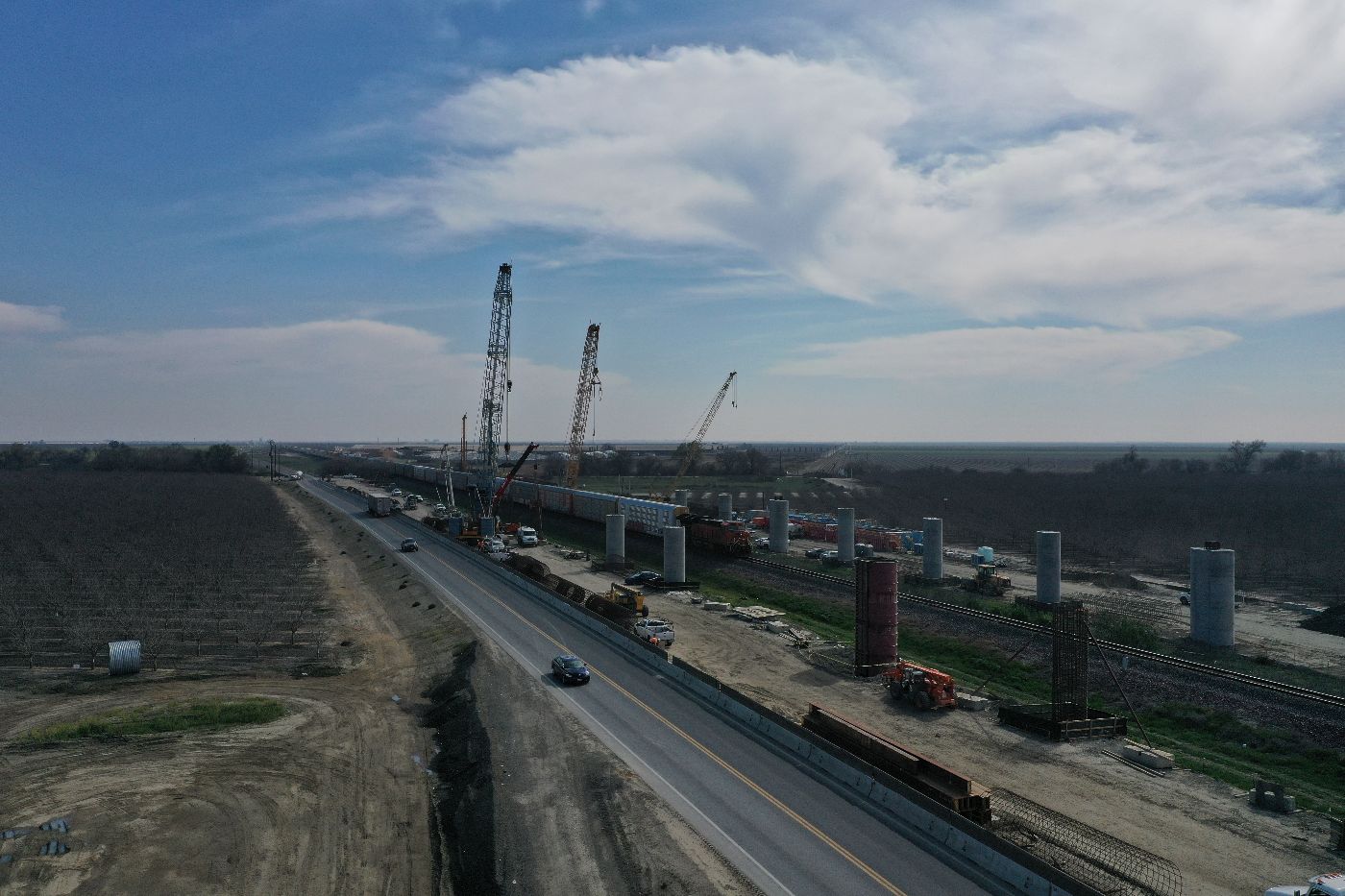
CP 2-3: Tule River Viaduct
In Tulare County, crews have completed more than 100 Cast-in-Drilled-Holes to provide the foundation of the Tule River Viaduct. CIDH piles can be as large as 11-feet in diameter and are drilled up to 200-feet deep. Across the structure, crews are installing rebar and placing concrete to form the footings and future columns. As of Spring 2022, 32 of the 75 columns of needed for the Tule River Viaduct are now complete. Crews will be gearing up to install the falsework necessary to form the pergola section of the structure later this spring.
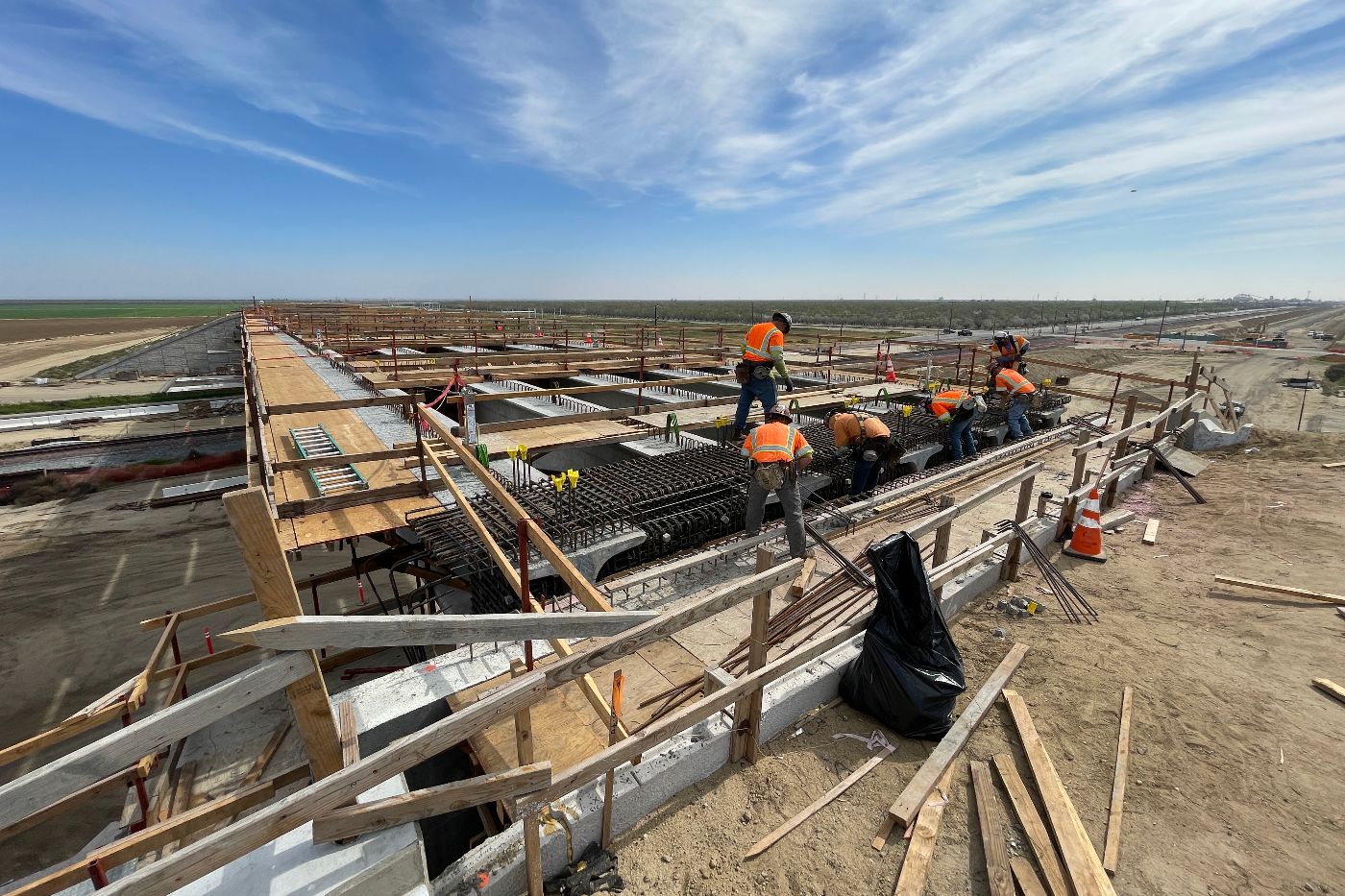
CP 4: McCombs Road
In Construction Package 4, the year kicked off with crews completing the installation of 15 pre-cast girders to form the superstructure of the McCombs Road Grade Separation. Work was completed over the four nights. Crews are now working on other superstructure elements and are preparing to place concrete for the abutment diaphragms. When the abutment diaphragms are formed, crews will begin installing 360 pre-cast concrete deck panels on top of the superstructure. When complete, the McCombs Road Grade Separation will be 415-feet long and will take traffic over, State Route 43, existing BNSF rail lines, and future high-speed rail lines.
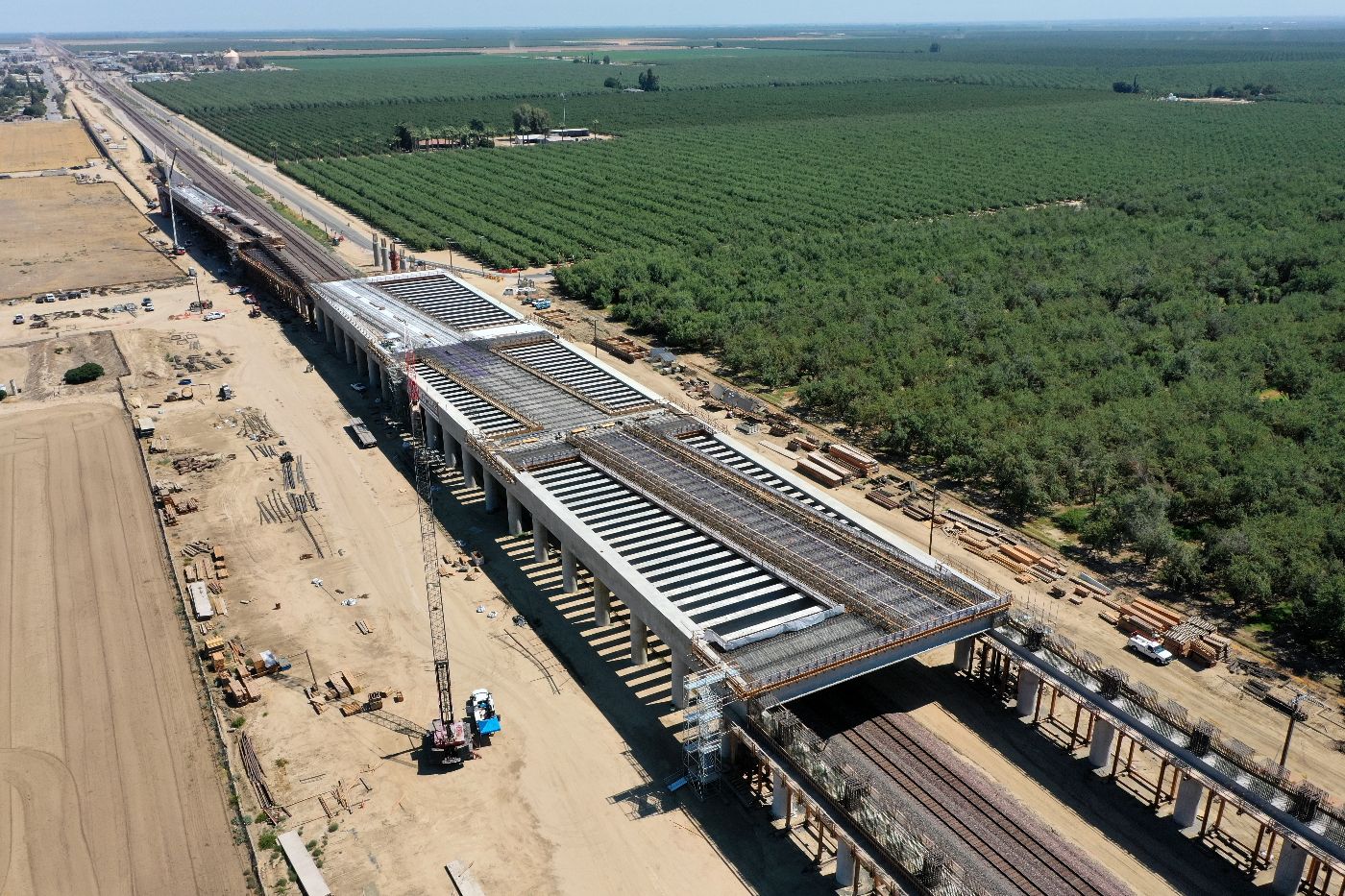
CP 4: Wasco Viaduct
Throughout January and February, carpenters and ironworkers continued working on the remaining edge girder sections of the Wasco Viaduct. Crews are now performing post-tensioning activities to reinforce the concrete before the last four girders are installed on the south side of the pergola structure. The viaducts on the north and south side of the structure are expected to be complete this spring. When complete, the Wasco Viaduct will be nearly 2,000 feet long.
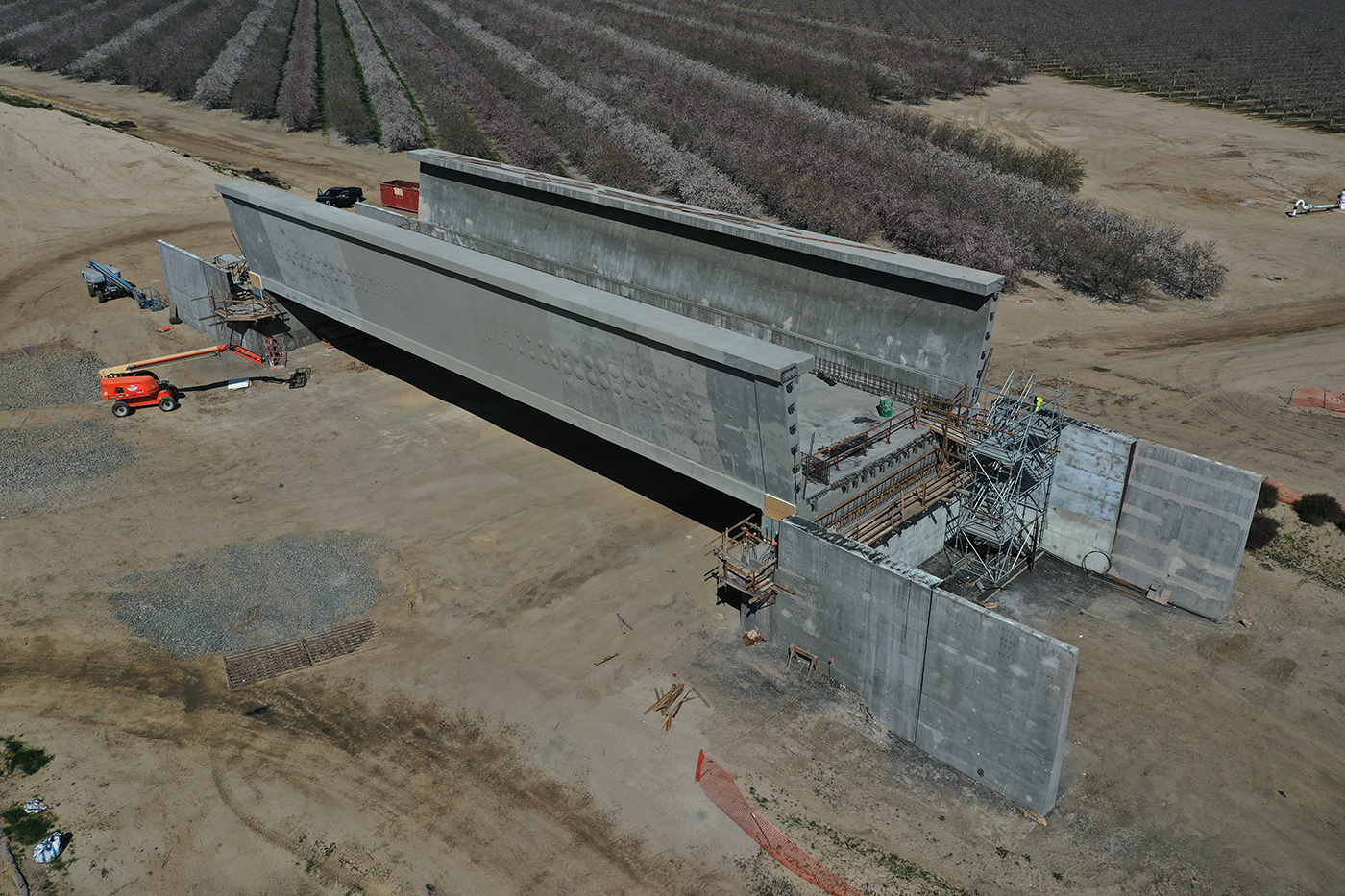
CP 4: Peterson Road Bridge
The Peterson Road Bridge is nearly complete. Final touches are being put on the structure and crews will commence with constructing the embankments on the north and south sides of the bridge. In the coming weeks, Peterson Road will be striped and opened for traffic. The Peterson Road Bridge will take high-speed trains over traffic and will be more than 153-feet long and 52-feet wide.
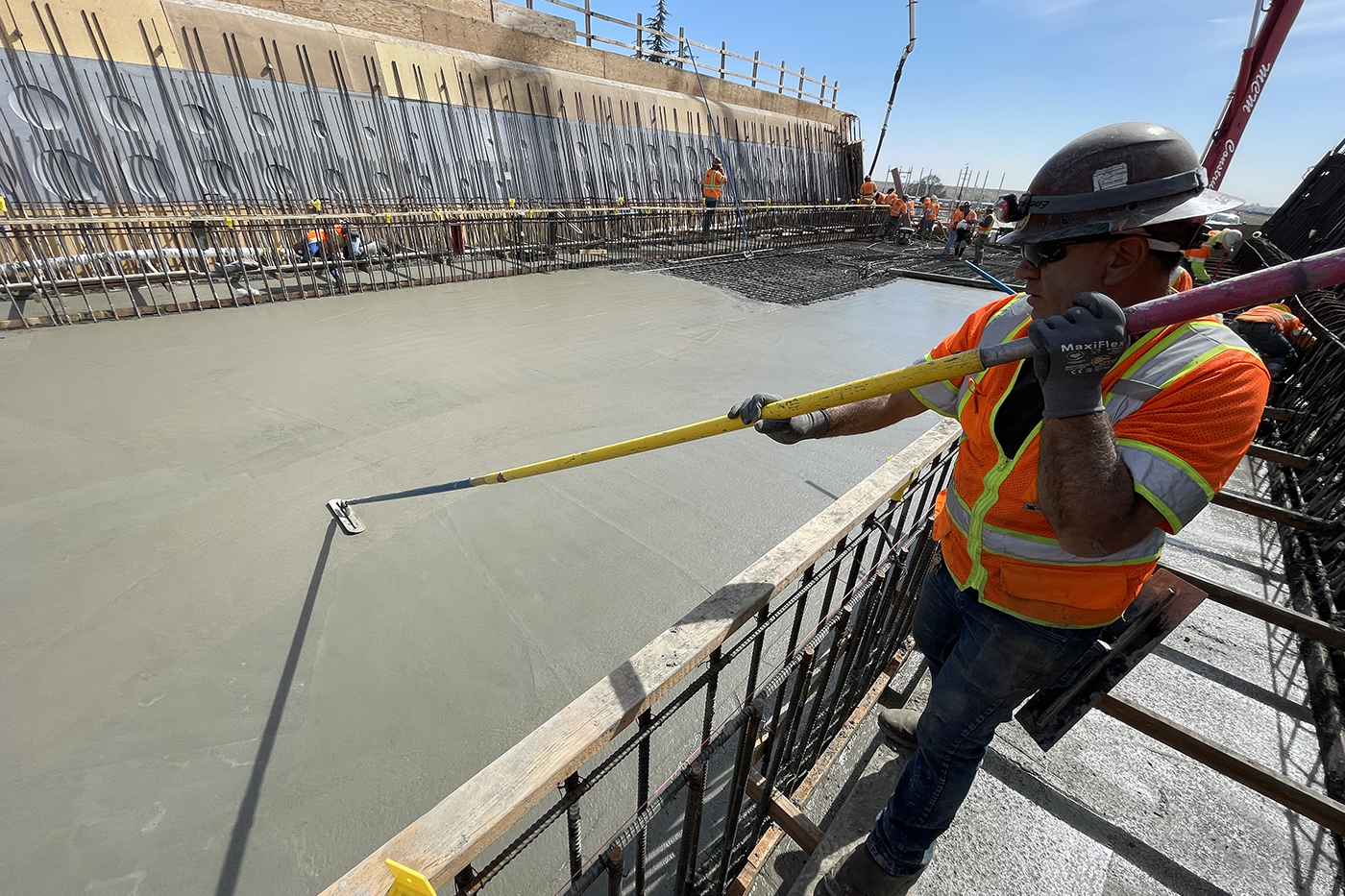
CP 4: Kimberlina Viaduct
In March, crews completed the lower deck of the Kimberlina Viaduct by placing 560 cubic-yards of concrete in the span of seven hours. Crews will start working on the stem walls by continuing to tie rebar and placing concrete throughout the spring. When complete, the Kimberlina Viaduct will be 110-feet long and will take high-speed trains over traffic.